

Rawson's Thesis (all statements in quotation marks are taken from the book's introduction):
1. “That children were, in principle and often in practice, welcome and valued and visible in Roman society is the main argument of this book.”
2. “Moreover, there are distinctively Roman concepts and treatment of children which can be identified.”
3. There is evidence that supports the notion of change and development over time, particularly in the second century CE, when one can find more expressions of family sentiment and greater visibility of children.
Representative Images (from the VRoma Image Archive, not shown in any particular order):
 |
 |
| Detail of relief on front of large family tomb monument from Neumagen depicting husband and wife clasping right hands over head of young son (Roman, 3rd century CE) | Relief from Neumagen depicting a teacher and pupils (Roman, end 2nd century CE) |
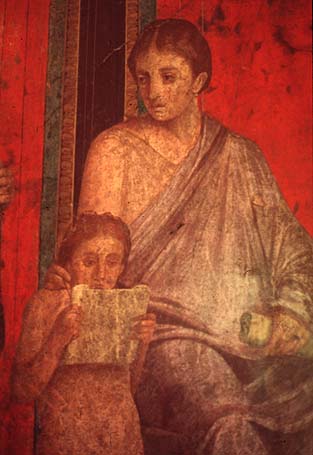 |
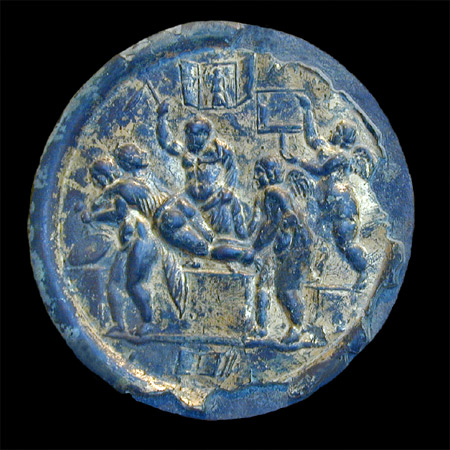 |
| Wall painting from Pompeii: woman with scroll and child reading (Roman, 1st century CE) |
Gilt bronze mirror cover with representation of spanking in schoolroom, using Dionysiac symbolism (Silenus, maenad, Cupids) (Roman, 1st century CE, probably from Asia Minor) |
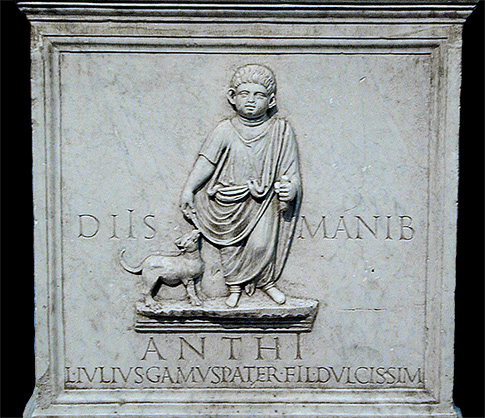 |
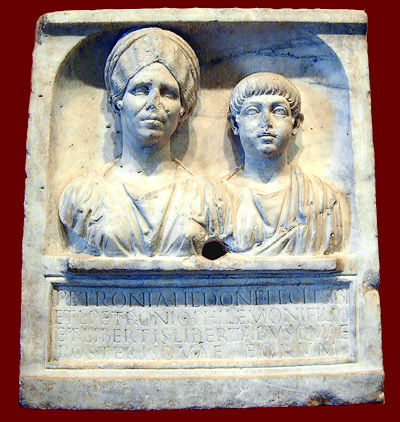 |
| Funerary altar for young boy (Roman, c. 50-70
CE) “To the departed spirits of Anthus; his father, Lucius Julius Gamus [set this up] for his very sweet son.” |
Funerary relief of mother and son (Roman, c. 110-20
CE) “Petronia Hedone set this up for herself, for her son Lucius Petronius Philemon, and for her freedmen and freedwomen and their descendants.” |
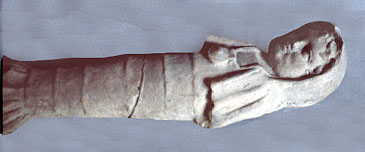 |
 |
| Terracotta image of swaddled infant with bulla | Bust of little girl (Roman, late 2nd century CE) |
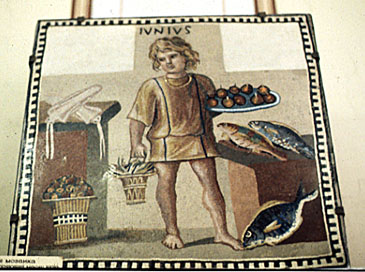 |
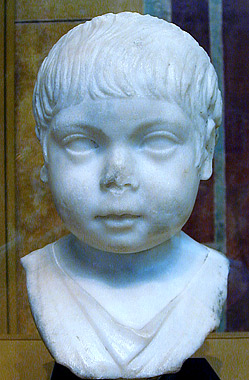 |
| Roman mosaic of boy slave in kitchen scene, with figs, fish, etc. [example of a “pet” slave (deliciae)?] | Bust of a young boy (Roman, c. 50 CE) |
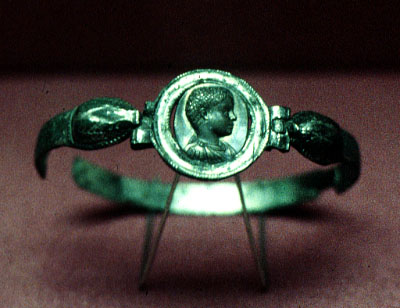 |
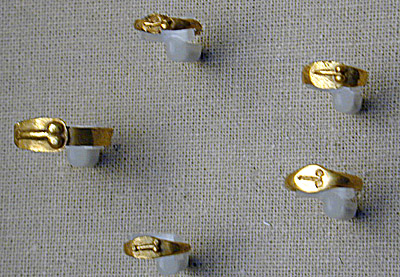 |
| Silver bracelet with child's portrait (Roman) | Gold children's rings carved with a phallus for good luck (Roman, 1st-3rd century CE |
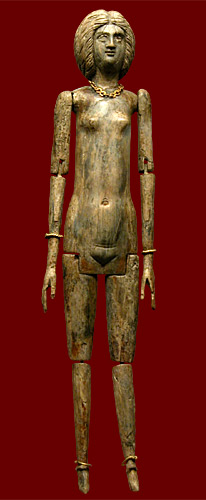 |
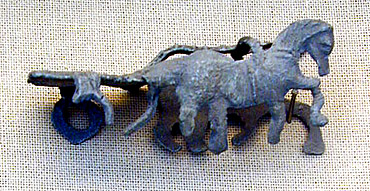 |
| Toy chariot horses for biga (chariot missing); made of lead (Roman, from Smyrna; 1st century CE ) | |
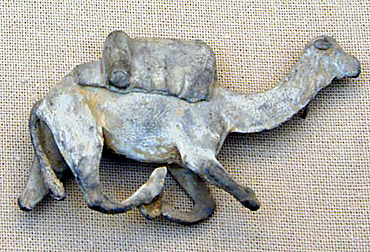 |
|
| Jointed ivory doll (Roman, end 1st -
beginning 2nd century CE) Doll is anatomically correct, wears a gold necklace, bracelets, and anklets, and has a face and hairstyle imitating that of the empress Julia Domna [proves that Mattell did not invent Barbie!] |
Toy camel carrying pack; made of lead (Roman, said to be from Egypt; 1st century CE) |
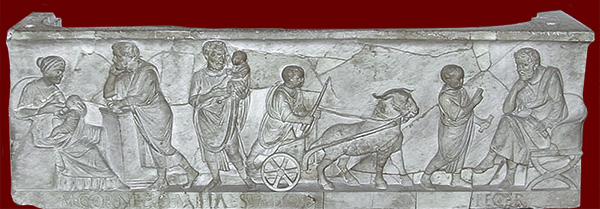 |
| Sarcophagus of M. Cornelius Statius depicting stages
in a boy's life (Roman, 2nd century CE) Mother nurses infant while father looks on; father holds infant; youth rides in chariot drawn by goat; youth recites lesson before tutor. |
 |
|
Sarcophagus of a young child, showing boys playing
with nuts (275-300 CE) |
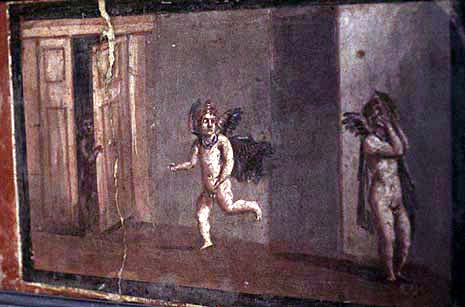 |
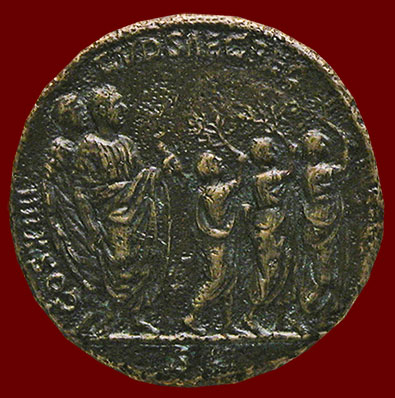 |
| Roman wall painting depicting children's game: Cupids playing hide & seek | Bronze coin of Domitian (88 CE), commemorating his celebration of the Secular Games, depicts the emperor with a choral procession of boys and girls in honor of the gods Apollo and Diana. |
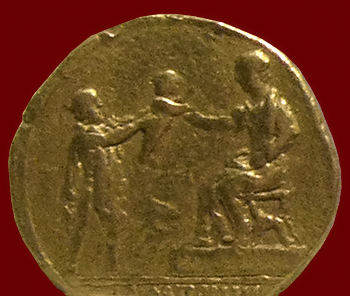 |
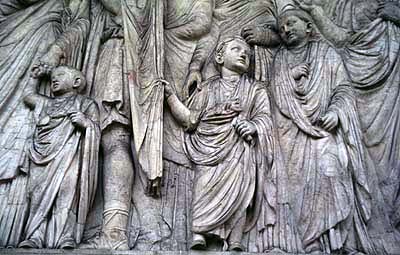 |
| Gold coin of Augustus depicting the emperor seated on his chair of office receiving a symbolic child from a citizen (c. 8 BCE) | Detail of procession on the south side of Augustus's Altar of Peace (Ara Pacis) depicting several children from the imperial family (9 BCE) |
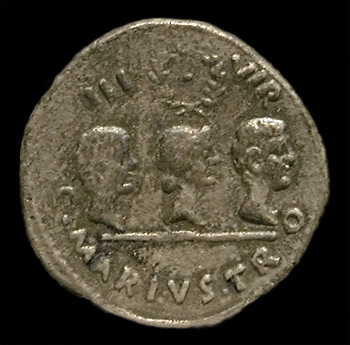 |
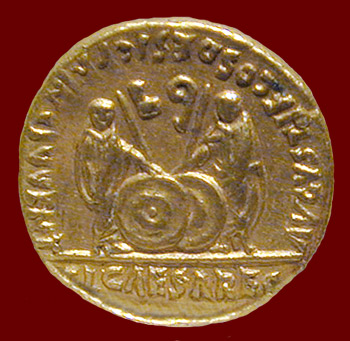 |
| Silver coin of Augustus (13 BCE) depicting his daughter Julia flanked by her two sons Gaius and Lucius; there is a laurel wreath directly above Julia's head. | Gold coin of Augustus (2 BCE) depicting his adopted sons (actually grandsons) Gaius and Lucius Caesar, shown with honorific shields and spears. The inscription identifies them as “sons of Augustus, consuls designate, and leaders of youth (principes iuventutis).” |
 |
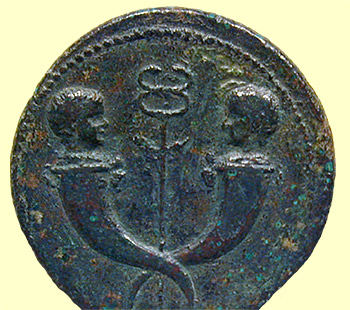 |
| Molded glass medallion of Germanicus (c. 20-40 CE), brother of Claudius and husband of Agrippina the Elder. Germanicus is shown surrounded by the heads of three of his six children portrayed as infants. | Bronze coin of Tiberius for his son Drusus (c. 22 CE). Two crossed cornucopiae display the heads of Drusus' sons Tiberius Gemellus and Germanicus, with a winged caduceus between them. |